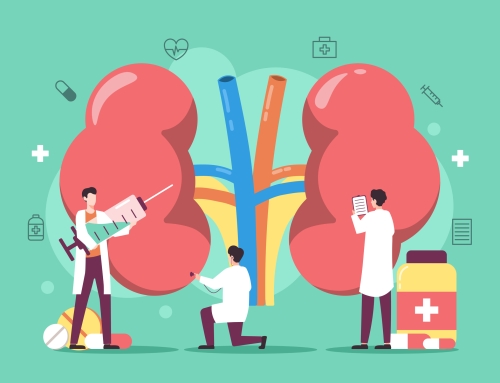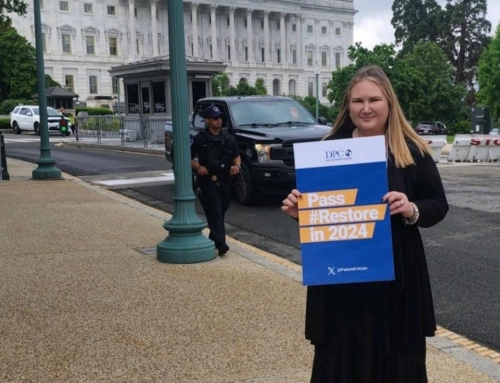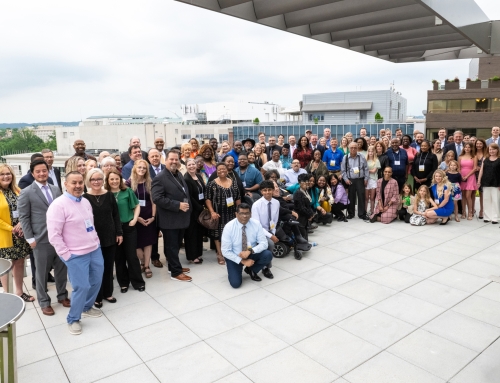By Linda G, Guest Blogger
Hi my name is Linda Gromko and I am a a Seattle family practice physician who served as my husband’s Care Partner in both home hemodialysis and home peritoneal dialysis for several years before his death in 2011. I am a strong advocate of home dialysis, and I have co-authored “Arranging Your Life When Dialysis Comes Home: The Underwear Factor” with Interior Designer Jane C. McClure. I also wrote “Complications: A Doctor’s Love Story,” and “Let Me Go When the Banter Stops: A Doctor’s Fight for the Love of Her Life.” I wanted to share my experiences in hopes of improving quality of life for all people on dialysis – but also to prevent end-stage renal disease (ESRD)) in the first place. Each quarter, I will share pieces of our story from both the patient and caregiver perspective.
Getting Started with Home Dialysis
Not long after I met the love of my life, Steve Williams, we learned that his kidneys were failing. We knew he would need dialysis at some point, perhaps years down the road. But nothing could have prepared us for his precipitous spiral into Acute Renal Failure! A perfect storm of three relatively minor problems, i.e., a dental abscess, bronchitis, and a sinus infection, tipped his already precarious balance into a free-fall – with his creatinine rising from an abnormal level of 4 (normal is about 1) to 10 in only two weeks! Steve was admitted to the hospital for emergent dialysis.
We then went to “kidney school” at the Northwest Kidney Centers, where we learned that Steve had three options:
1) kidney transplant (not possible in the short run)
2) dialysis, or
3) “Door Number 3,”as Steve would call it: certain death within two weeks without treatment. Door Number Three was not an option for my soul mate and father of an 11-year-old daughter.
Because we lived on Bainbridge Island – a ferry commute to Seattle, and because there was no dialysis center on the Island, we decided to learn to do home dialysis. In essence, we became the Bainbridge Island Dialysis Center.
Many people have asked if we did home dialysis because I am a doctor. The answer was always, “No, we did home dialysis because we received excellent training at the Northwest Kidney Centers.”
Why did we want to learn home dialysis?
In addition to the logistics of where we lived – and the absence of a neighborhood center, Steve and I found a number of compelling reasons to do dialysis at home.
1. Comfort: Dr. Thakur, Steve’s nephrologist, called it “the underwear factor.” What he meant was that at home, you can dialyze in your boxer shorts if you like. You can spend time with your family and friends. You are in your own home, and it feels good and normal to be there.
2. Flexibility: Most dialysis centers assign you a schedule for four-hour hemodialysis treatments done three days a week. You must dialyze according to the center’s schedule – not yours.
3. Gentler, More Effective Dialysis: Home dialysis allows you to do more frequent treatments, and often at a gentler pace. Many experts believe that more frequent treatments are more effective in mimicking natural kidney function. And why not? Normal kidneys are on the job “24/7” – not for just three treatments per week.
4. Overnight Dialysis: Nocturnal dialysis can be done with either hemodialysis or peritoneal dialysis, freeing more daytime hours for things you’d rather do.
5. Infection Control: It just makes sense that if you do dialysis at home, you will be exposed to fewer infections than if you are treated in a facility with many patients and care providers. No matter how meticulous the care, there is more chance of picking up an infection that a kidney patient doesn’t need.
6. Quality Control: Steve received only superlative care at the Northwest Kidney Centers, but we could imagine getting a nurse or technician he didn’t get along with – or worse, wasn’t as careful with that precious new fistula as they should be. Nobody cares more about the quality of your treatment – or your general wellbeing – than you or your partner.
7. You can go on vacation! While it takes some doing, you can take your dialysis machine on the road. Steve and I went to San Diego for a business convention only months after we learned home hemodialysis. Other people take their machines on cruise ships, or go camping in the RV.
8. Time to Multi-task: Steve used to conduct conference calls with business associates. Many people work on their computers; peritoneal dialysis can be done at work, depending on your workplace!
9. Time Together: Kidney failure is a life-threatening condition; thank goodness we have the medical miracle of life-saving dialysis! But when you’ve been faced with this diagnosis, life becomes a little more precious. It’s such a gift to have time to spend with your family – even if it’s time “on the hose,” as Steve would say!
Home dialysis offers the best in flexibility, comfort, and personal control. And there’s no doubt in my mind that it improved the quality of Steve’s life. Ask your nephrologist or your dialysis center about home dialysis training available in your area.
In our next blog, we’ll address the question, “Are you cut out to do Home Dialysis?” Please comment below I hope sharing some of our story will encourage you to share yours as well.




